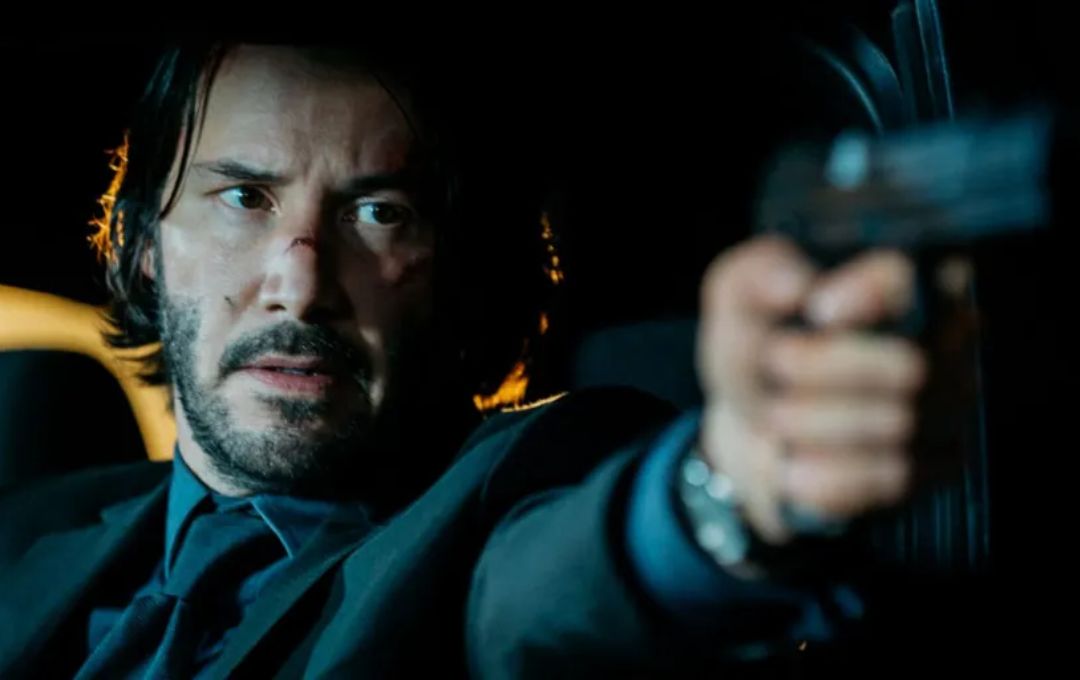10 Hidden Details in the John Wick Movies Even Die-Hard Fans Missed
The John Wick franchise has redefined the action genre with its intricate world-building, jaw-dropping stunts, and compelling characters.

The John Wick franchise has redefined the action genre with its intricate world-building, jaw-dropping stunts, and compelling characters. Beyond the high-octane fight scenes and sleek storytelling lies a treasure trove of subtle details that enrich the series’ lore. Directed by Chad Stahelski, a former stunt coordinator, these films weave intricate layers of mythology, symbolism, and storytelling. Even the most dedicated fans may overlook some of the finer points scattered throughout the series.
From the enigmatic gold coin economy to the deeper meanings behind John Wick’s suits, here are 10 fascinating details even devoted fans might have missed.
10. Markers: The Ultimate Challenge Coins with a Deadly Twist
Markers, pivotal to the John Wick universe, are more than tokens of obligation—they draw inspiration from real-life military traditions. Stahelski has revealed that the concept originates from “challenge coins,” which signify loyalty and camaraderie among military members. However, in Wick’s world, these markers double as blank checks for life-and-death favors.
Each marker represents a binding oath. As Stahelski explained, a marker can symbolize risking, saving, or taking a life. This symbolic and literal weight adds layers to John’s tense dynamic with Sofia in Chapter 3, where honoring a marker forces her to risk everything for him.
9. A Nod to Stahelski’s Favorite Book
In John Wick (2014), an airport security guard is seen reading Shibumi, a 1979 novel by Trevanian. This book, about an assassin navigating complex missions, was a major influence on Stahelski during his formative years. The book also inspired Wick’s infamous “pencil kill,” echoing a similar scene from the novel.
Fans may be thrilled to know that Stahelski is set to adapt Shibumi into a film. While details remain scarce, the novel’s shadow looms large over the John Wick franchise.
8. The Real Baba Yaga Legend
John Wick’s nickname, “Baba Yaga,” is often translated as “The Boogeyman,” but it has deeper Slavic roots. In Russian folklore, Baba Yaga is a witch who lives in a forest and lures victims to her house, only to devour them. Her legend expands into a mythological figure capable of appearing anywhere, much like John Wick’s reputation as an unstoppable force.
This chilling parallel deepens when Wick kills Gianna D’Antonio in Chapter 2, reflecting Baba Yaga’s terrifying precision and presence.
7. An Indie Film Success Story
The original John Wick film had surprisingly humble beginnings. Stahelski and co-creator David Leitch struggled to pitch their vision to studios. The idea of a revenge-driven assassin killing scores of enemies over a puppy didn’t initially resonate. Lionsgate eventually picked up the film through a negative pickup deal, and Keanu Reeves even contributed part of his salary to overcome financial hurdles.
The indie roots of John Wick make its high production value and global acclaim all the more impressive.
6. The Mystery of the Gold Coin Economy
The gold coins used in the John Wick universe are a unique currency tied to the underworld’s code of honor. Interestingly, whether you’re booking a room at The Continental or hiring cleanup services, the cost is always one coin. The coins themselves hold symbolic meanings: one side bears the Latin phrase Ex Unitae Veris (“Unity is Strength”), while the other reads Ens Causa Sui (“Being One’s Own Cause”).
These phrases underline the mutual dependency and autonomy that govern the assassin world. Every transaction is less about value and more about trust and protection.
5. John Wick’s Suits: Shades of Gray
While John Wick’s suits often appear black or navy on-screen, they’re actually varying shades of gray. Costume designer Lucas Mosca chose this palette to reflect Wick’s shattered heart and moral ambiguity. The suits also take inspiration from a charcoal-gray Glock pistol, emphasizing their functional yet somber tone.
Interestingly, Wick wears a true black suit only during the Rome sequences in Chapter 2, signaling a deliberate stylistic choice to distinguish this chapter of his journey.
4. A Staggering Body Count
By the end of John Wick: Chapter 4, the titular assassin has amassed a body count of at least 439 on-screen kills. Here’s the breakdown:
John Wick (2014): 77 kills
Chapter 2: 128 kills
Chapter 3 – Parabellum: 94 kills
Chapter 4: 140 kills
Each kill isn’t just a number; it underscores Wick’s relentless pursuit of survival, justice, and vengeance.
3. Charon: A Mythological Connection
Charon, Winston’s trusted concierge at The Continental, has a name steeped in Greek mythology. In ancient lore, Charon ferries souls across the river Styx, demanding payment in gold coins. This mirrors Charon’s role in the franchise, where he ensures the safety of guests within The Continental.
Tragically, Charon’s death in Chapter 4 adds a poignant layer to his mythological parallel, as he himself becomes a soul lost in the deadly game of the assassin underworld.
2. Hints of John Wick’s Military Past
While John Wick’s past remains shrouded in mystery, there are subtle hints of a military background. One clue lies in how Wick wears his watch—with the face on the inside of his wrist. This style is common among soldiers to prevent the watch’s reflection from revealing their position.
Additionally, Wick’s tattoo reads Fortis Fortuna Adiuvat (“Fortune Favors the Brave”), a motto often associated with military units, further suggesting a possible connection.
1. The Harbinger’s Missing Finger
In Chapter 3, John Wick severs his ring finger as a show of loyalty to the High Table. This sacrifice is mirrored in Chapter 4 by the Harbinger, a mysterious figure overseeing Wick’s duel with Caine. The Harbinger’s missing finger suggests that he, too, underwent a similar ritual at some point.
This detail not only adds depth to the Harbinger’s character but also reinforces the franchise’s theme of personal sacrifice for survival.
Conclusion
The John Wick movies are a masterclass in world-building and detail-oriented storytelling. From their nods to mythology and military traditions to the symbolism hidden in costume and set design, these films reward attentive viewers. Whether you’re rewatching for the action or uncovering these subtleties, the John Wick universe proves there’s always more to explore beneath the surface.
Source: CBR







